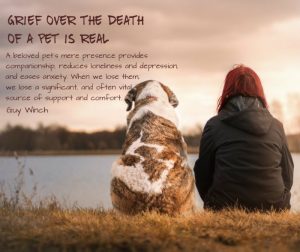
How to cope with the death of a loved one is a question many face. This journey through grief is intensely personal, marked by a spectrum of emotions from profound sadness to unexpected anger. Understanding the stages of grief, building a supportive network, and practicing self-care are crucial elements in navigating this challenging time. This guide offers practical strategies and resources to help you through this difficult period, fostering healing and a path toward acceptance.
We will explore the various stages of grief, providing examples and coping mechanisms for each. We’ll discuss the importance of seeking support from friends, family, and professionals, and highlight various resources available to those who need them. Finally, we’ll examine long-term healing and the process of finding meaning and purpose after loss.
Understanding Grief and its Stages
Grief is a deeply personal and complex process following the loss of a loved one. It’s not a linear journey, and the experience varies greatly from person to person. Understanding the common stages and symptoms can help individuals navigate this challenging time and seek appropriate support.
The Five Stages of Grief
The Kübler-Ross model Artikels five stages of grief: denial, anger, bargaining, depression, and acceptance. It’s crucial to remember that these stages are not necessarily experienced in a specific order, nor does everyone experience all of them. Some individuals may cycle through these stages multiple times, while others may primarily experience one or two.
Denial is a temporary defense mechanism, often characterized by disbelief or numbness. For example, someone might refuse to believe the news of a loved one’s death, continuing to act as if the person is still alive. Anger can manifest as frustration, resentment, or rage directed at oneself, others, or even a higher power. This might involve blaming doctors, family members, or even God for the loss.
Bargaining involves attempting to negotiate with a higher power or fate to change the outcome. This could involve making promises to God in exchange for the loved one’s return. Depression is a period of intense sadness, hopelessness, and withdrawal. Symptoms might include loss of appetite, sleep disturbances, and feelings of worthlessness. Finally, acceptance is not necessarily about feeling happy or okay with the loss, but rather coming to terms with the reality of the situation and finding a way to move forward.
This might involve acknowledging the loss while finding ways to integrate it into one’s life.
Physical and Emotional Symptoms of Grief
Grief profoundly impacts both the mind and body. Emotional symptoms can include sadness, anxiety, guilt, and loneliness. Physical symptoms are also common and can include fatigue, changes in appetite, sleep disturbances, headaches, and even physical pain. These physical manifestations are a direct result of the emotional stress the body is experiencing. The intensity and duration of these symptoms vary widely depending on individual factors, including the nature of the relationship with the deceased, the circumstances of the death, and the individual’s coping mechanisms.
Types of Grief
Understanding the nuances of grief can be helpful in navigating the grieving process. Different types of grief exist, each presenting unique challenges.
| Type of Grief | Description | Symptoms | Potential Complications |
|---|---|---|---|
| Complicated Grief | Intense and prolonged grief that significantly impairs daily functioning. | Persistent yearning, intrusive thoughts, difficulty accepting the loss, avoidance of reminders of the deceased. | Significant functional impairment, mental health issues, relationship difficulties. |
| Anticipatory Grief | Grief experienced before a loss occurs, often when dealing with a terminal illness. | Sadness, anxiety, anger, and a sense of loss even before the death occurs. | Potential for emotional exhaustion, difficulty adjusting after the actual death. |
| Disenfranchised Grief | Grief that is not openly acknowledged or socially supported. | Feeling isolated, unable to share grief openly, difficulty processing the loss due to lack of social validation. | Increased feelings of isolation, difficulty finding support. |
| Chronic Grief | Grief that persists for an extended period, often exceeding typical grieving timelines. | Intense and persistent sadness, difficulty moving on, significant impact on daily life. | Challenges in social, occupational, and personal functioning. |
Seeking Support and Building a Support System

The death of a loved one is a profoundly isolating experience, yet the need for connection and support is arguably at its strongest during this time. Leaning on others is not a sign of weakness; it’s a vital part of navigating the complex emotions and practical challenges of grief. Building a strong support system can significantly impact your healing process, offering comfort, understanding, and practical assistance.Social support plays a crucial role in mitigating the negative impacts of bereavement.
Studies consistently show that individuals with strong social networks experience less intense grief, recover more quickly, and exhibit better overall mental and physical health. This support acts as a buffer against the overwhelming feelings of sadness, loneliness, and despair that often accompany loss. The presence of caring individuals offers a sense of stability and belonging during a period of significant upheaval.
Available Resources for Grieving Individuals
Numerous resources are available to help individuals cope with grief. These resources provide various levels of support, catering to different needs and preferences. Accessing these resources can be a proactive step towards healing and regaining a sense of normalcy.
- Support Groups: These groups offer a safe and empathetic space for individuals to share their experiences, connect with others who understand their pain, and learn coping mechanisms from both peers and facilitators. The shared experience within a support group can significantly reduce feelings of isolation and validate the intensity of grief.
- Therapy: Individual or group therapy provides a structured environment for exploring grief, processing emotions, and developing healthy coping strategies. A therapist can offer guidance, tools, and a non-judgmental space to process complex feelings and navigate challenging situations.
- Helplines: Many helplines offer immediate emotional support and crisis intervention. These services are readily accessible, providing a confidential and anonymous space to talk to trained professionals who can offer immediate comfort and guidance.
- Online Resources: Websites and online forums dedicated to grief and bereavement offer information, support, and a sense of community. These platforms allow individuals to connect with others anonymously and access resources at their own pace and convenience.
Developing a Plan for Reaching Out
Reaching out for support can feel daunting, especially during the acute stages of grief. However, creating a plan can make this process more manageable and increase the likelihood of receiving the help you need. Open communication is key.
- Identify Key Support People: Make a list of friends, family members, colleagues, or religious leaders who you feel comfortable confiding in. Consider those who have offered support in the past or who you believe can offer a listening ear and practical assistance.
- Choose Your Communication Method: Consider your comfort level and the preferences of the individuals you’re contacting. A phone call might be more personal, while a text message might be less overwhelming. Emails can provide a written record of your needs.
- Prepare a Brief Message: A simple message expressing your need for support can be helpful. You don’t need to go into excessive detail. Examples include: “I’m finding things difficult right now and could really use your support,” or “I’d appreciate it if we could talk sometime soon.”
- Accept Offers of Help: Don’t hesitate to accept practical assistance offered by others, such as help with errands, meals, or childcare. Allowing others to support you in tangible ways can ease your burden and allow you to focus on your emotional healing.
Managing Difficult Emotions
Grief is rarely a neat, linear process. It’s common to experience a wide range of intense and often conflicting emotions following the death of a loved one. Learning to manage these emotions is crucial for navigating the grieving process and fostering healing. This section will explore strategies for coping with common emotional challenges and building resilience.
The death of a loved one can trigger a cascade of intense emotions, including sadness, anger, guilt, and even numbness. These feelings are normal responses to loss, and attempting to suppress them can be counterproductive. Instead, it’s important to acknowledge and process these emotions in healthy ways. Understanding that these feelings are part of the healing process can help reduce the sense of being overwhelmed.
Strategies for Managing Intense Emotions
Several strategies can help manage overwhelming emotions. These techniques aren’t a quick fix, but consistent practice can significantly improve emotional regulation.
- Allow yourself to feel: Don’t try to bottle up your emotions. Crying, expressing anger in a healthy way (like through exercise or journaling), or simply allowing yourself to feel sadness are all important parts of the healing process. Suppressing emotions can prolong the grieving process and lead to other health problems.
- Engage in self-soothing activities: Find activities that bring you comfort and relaxation. This could include listening to calming music, spending time in nature, practicing mindfulness or meditation, taking a warm bath, or engaging in a favorite hobby. These activities help regulate the nervous system and reduce stress.
- Seek professional help: A therapist or counselor can provide a safe space to explore your emotions, develop coping mechanisms, and work through complex grief reactions. They can offer evidence-based therapies like Cognitive Behavioral Therapy (CBT) or grief counseling tailored to your needs.
Processing and Accepting Painful Memories
Memories of your loved one, both positive and negative, are an important part of your relationship. These memories can be painful, but avoiding them is not helpful. Instead, focus on processing these memories in a way that honors your relationship and allows for healing.
- Journaling: Writing about your memories, feelings, and experiences can be a powerful way to process your grief. It allows you to externalize your emotions and gain perspective.
- Creating a memory book or scrapbook: Gathering photos, letters, and other mementos can be a meaningful way to celebrate your loved one’s life and preserve cherished memories.
- Sharing memories with others: Talking to friends, family, or a therapist about your memories can provide comfort and support. Sharing your memories can also help to solidify your loved one’s legacy and keep their memory alive.
Identifying and Challenging Negative Thought Patterns
Grief can lead to negative thought patterns, such as self-blame, regret, or unrealistic expectations about the future. Identifying and challenging these negative thoughts is essential for healing. Cognitive distortions are common during grief, and learning to recognize them is a crucial step.
- Identify negative thoughts: Pay attention to the thoughts that repeatedly enter your mind. Are they realistic or based on assumptions? Write them down to gain clarity.
- Challenge negative thoughts: Once you’ve identified negative thoughts, ask yourself if there’s evidence to support them. Are you catastrophizing or engaging in all-or-nothing thinking? Try to reframe negative thoughts into more balanced and realistic perspectives.
- Practice self-compassion: Be kind to yourself during this difficult time. Grief is a challenging experience, and it’s okay to feel overwhelmed or make mistakes. Treat yourself with the same understanding and compassion you would offer a friend.
Remembering and Honoring the Deceased: How To Cope With The Death Of A Loved One

The death of a loved one leaves a void, but the memories and the life they lived should be celebrated and cherished. Remembering and honoring them is a crucial part of the grieving process, allowing us to maintain a connection and find comfort in their legacy. It’s a deeply personal journey, and there is no right or wrong way to do it.
The important thing is to find ways that feel meaningful and authentic to you.Honoring a deceased loved one can take many forms, from grand gestures to quiet, personal rituals. These acts of remembrance help us to process our grief and keep their memory alive, transforming sorrow into a celebration of their life.
Ways to Remember and Honor a Loved One
Many options exist for commemorating the life of someone you’ve lost. These actions can provide comfort and a sense of continuity. Consider these possibilities, adapting them to your own unique relationship with the deceased.
- Creating a Memorial: A physical memorial, like a photo album, scrapbook, or a dedicated space in your home filled with their belongings and photographs, can serve as a tangible reminder of their life. A more public memorial, such as a memorial garden or a bench in a park, can extend this remembrance to the wider community.
- Sharing Stories: Gather with family and friends to share memories and anecdotes about the deceased. These stories can help to keep their personality and spirit alive, reminding everyone of the positive impact they had on others. Even writing down your own memories can be a profoundly therapeutic experience.
- Planting a Tree: Planting a tree in their memory symbolizes growth, remembrance, and the enduring nature of life. The tree becomes a living memorial, growing and changing over time, much like the memories of the deceased.
- Creating a Legacy Project: Consider undertaking a project in their name, such as volunteering for a cause they cared about, establishing a scholarship fund, or donating to a charity that aligns with their values. This transforms grief into positive action.
- Making a Donation in Their Name: Donating to a charity that was meaningful to your loved one provides a lasting way to honor their memory and support a cause they believed in.
Meaningful Activities Celebrating the Life of the Deceased
Engaging in activities that celebrate the life and personality of the deceased can provide a sense of connection and healing. These activities can be tailored to their interests and passions.
- Watching their favorite movie or listening to their favorite music: Immersing yourself in the things they enjoyed can bring back happy memories and evoke positive feelings.
- Cooking their favorite meal: Sharing a meal that they loved can be a comforting way to remember them and connect with others who shared those experiences.
- Visiting places that were special to them: Revisiting places that hold significant memories can help to keep their spirit alive and provide a sense of closeness.
- Looking through old photos and videos: Reminiscing over cherished moments captured in images and videos can evoke powerful emotions and help to maintain a connection with the past.
- Writing a letter to them: Expressing your feelings and memories in a letter can be a therapeutic way to process your grief and maintain a connection with the deceased.
A Personal Ritual for Remembering a Lost Loved One
My own personal ritual involves lighting a candle on the anniversary of my grandmother’s passing. The soft glow of the candle represents her warmth and kindness, and the flickering flame symbolizes the ever-changing nature of life and memory. I often sit quietly beside it, reflecting on happy memories and sharing a silent moment of remembrance. This simple act provides a sense of peace and connection, helping me to feel closer to her even in her absence.
Death and Dying: Practical Considerations
The death of a loved one necessitates navigating a complex array of practical tasks alongside the emotional challenges. Effectively managing these practicalities can provide a sense of control and order during a difficult time, allowing you to focus on grieving and healing. This section Artikels the key steps involved in planning a funeral or memorial service and handling the necessary legal and administrative procedures.Planning a Funeral or Memorial ServiceThis involves making several important decisions regarding the type of service, location, and details of the arrangements.
Consider the deceased’s wishes, if known, and the preferences of the family. Many funeral homes offer comprehensive guidance and support throughout this process.
Funeral or Memorial Service Arrangements
Arranging a funeral or memorial service typically begins with contacting a funeral home. They will guide you through the process, offering various options for services, caskets, embalming, cremation, viewings, and memorial services. You’ll need to decide on the location (funeral home, church, other venue), date, time, and the specifics of the service, such as readings, music, and eulogies.
It’s helpful to compile a list of names and contact information for those you wish to involve in the service. Remember to consider the deceased’s religious or spiritual beliefs and personal preferences when making these decisions. A pre-planned funeral arrangement can significantly alleviate the burden on the family during this stressful time.
Legal and Administrative Tasks After a Death
Following a death, several legal and administrative tasks must be addressed promptly. These steps often involve obtaining a death certificate, notifying relevant institutions, and managing financial affairs. Failing to address these tasks promptly can lead to significant complications.
Obtaining a Death Certificate and Notifying Relevant Parties
The first step is usually obtaining multiple copies of the death certificate from the relevant authorities (usually the local registrar). These certificates are required for various purposes, including closing bank accounts, claiming life insurance benefits, and settling the estate. You will then need to notify relevant parties such as banks, credit card companies, government agencies (Social Security Administration, etc.), and employers.
Providing a copy of the death certificate facilitates a smooth process for these notifications.
Handling Wills, Insurance Claims, and Estate Settlement
If the deceased had a will, it should be located and presented to the executor or personal representative named in the document. This individual is responsible for managing the estate, paying outstanding debts, and distributing assets according to the will’s instructions. If there is no will (intestate), the process becomes more complex, and the distribution of assets will be governed by state laws.
Life insurance policies and other insurance claims should be filed promptly, providing the necessary documentation including the death certificate. This often involves contacting the insurance company and following their specific claim procedures. Legal counsel may be beneficial in navigating these complexities, particularly for large or complex estates.
Step-by-Step Guide to Navigating the Practicalities of Death and Dying
Navigating the practical aspects of death and dying can feel overwhelming. A structured approach can help manage the process more effectively.
A Step-by-Step Approach, How to cope with the death of a loved one
- Obtain multiple copies of the death certificate.
- Notify relevant institutions (banks, credit card companies, government agencies, etc.).
- Locate and contact the executor or personal representative (if applicable).
- Begin the process of settling the estate, including paying outstanding debts and distributing assets.
- File life insurance and other relevant insurance claims.
- Arrange for the funeral or memorial service.
- Consider seeking legal and/or financial advice if needed.
Remember that this is a challenging time, and seeking support from friends, family, or professionals is crucial. Allow yourself time to grieve and process your emotions while attending to these practical matters.
When to Seek Professional Help
Grief is a deeply personal experience, and while many find solace in support systems and self-care, some individuals require professional guidance to navigate the complexities of loss. Recognizing when professional help is needed is crucial for healing and preventing the development of complicated grief.Understanding the warning signs of complicated grief is the first step in seeking appropriate care. Prolonged and intense grief, significantly impacting daily life, warrants attention.
This can manifest as persistent feelings of numbness, overwhelming sadness, or intense anger lasting far beyond what is considered typical for the individual and their cultural context. Difficulty functioning in daily activities, such as work, relationships, or self-care, is another strong indicator. Suicidal thoughts or self-harming behaviors are serious warning signs requiring immediate professional intervention.
Warning Signs Requiring Professional Grief Counseling
Persistent and debilitating symptoms such as intense yearning for the deceased, intrusive memories causing significant distress, avoidance of reminders of the deceased, and persistent disbelief or shock are all potential signs needing professional assessment. These symptoms, when significantly impacting daily functioning and lasting for an extended period (generally over six months), might indicate a need for professional intervention. For example, someone struggling to return to work, maintain personal hygiene, or engage in social interactions for months after a loss might benefit from professional support.
Another example might be a person experiencing recurring nightmares or flashbacks related to the death, significantly impacting their sleep and overall well-being.
Types of Therapy for Grief
Several therapeutic approaches effectively address grief. Cognitive Behavioral Therapy (CBT) helps individuals identify and modify negative thought patterns and behaviors contributing to their distress. For instance, CBT might help someone challenge their belief that they are to blame for the loss, or teach coping mechanisms for managing overwhelming sadness. Grief counseling, often provided by therapists specializing in bereavement, offers a safe space to explore emotions, process the loss, and develop healthy coping strategies.
This may involve techniques like journaling, guided imagery, or exploring the meaning of the loss within the individual’s life story. Other therapies such as Eye Movement Desensitization and Reprocessing (EMDR) can be helpful for individuals experiencing traumatic grief, assisting in the processing of difficult memories and reducing their emotional impact.
Benefits of Professional Help for Complicated Grief
Seeking professional help for complicated grief offers significant benefits. Therapy provides a structured and supportive environment to process emotions, gain insight into grief reactions, and develop healthy coping mechanisms. A therapist can help individuals identify and challenge unhelpful thought patterns that perpetuate their suffering. Furthermore, professional intervention can help prevent the development of more serious mental health conditions such as depression or anxiety, often associated with prolonged or unresolved grief.
For example, a person struggling with complicated grief might experience reduced anxiety and improved sleep after therapy, leading to a better quality of life. The therapeutic relationship itself can be incredibly valuable, offering a sense of validation, understanding, and hope during a difficult time. Professional support can ultimately empower individuals to rebuild their lives and find a path toward healing and acceptance.
Coping with the death of a loved one is a deeply personal and often protracted journey. While there is no single “right” way to grieve, understanding the stages of grief, building a strong support system, and prioritizing self-care are essential components of the healing process. Remember that seeking professional help is a sign of strength, not weakness, and that healing takes time.
Embrace the memories, honor your loved one, and allow yourself the space and grace to navigate this challenging chapter of life. The path to acceptance may be long, but with support and self-compassion, you can find a way forward.
Question & Answer Hub
What is complicated grief?
Complicated grief is characterized by persistent and overwhelming grief that interferes with daily life, often lasting much longer than typical grief. It may involve intense longing for the deceased, intrusive thoughts, and difficulty accepting the loss.
How long does the grieving process typically last?
There’s no set timeline for grief. It’s a highly individual process that can vary greatly in duration and intensity. While some may experience acute grief for several months, others may experience prolonged grief for years.
Is it normal to feel guilty after the death of a loved one?
Yes, guilt is a common emotion during grief. It can stem from unresolved conflicts, perceived failures to support the deceased, or simply feeling that you could have done more. Acknowledging and processing these feelings is important.
How can I help a friend who is grieving?
Offer practical support, like help with errands or meals. Listen empathetically without judgment. Avoid offering unsolicited advice. Simply being present and letting your friend know you care can make a significant difference.






